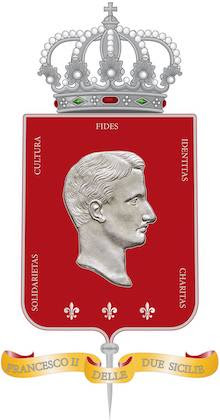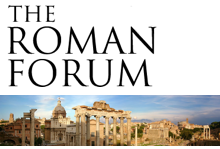From Gianandrea de Antonellis’s Carlismo per NapolitaniIn one of the most brilliantly incisive chapters of Carlismo per Napolitani (Solfanelli, 2022), Gianandrea de Antonellis turns his attention to what he calls the “paradox” of Neapolitan traditionalism: how could one be Bourbon and anti-Spanish at the same time? The question, posed with rhetorical precision in the chapter’s title—“Borbonico e antispagnolo?”—goes straight to the heart of a long-standing historical distortion that, in his view, continues to shape Southern Italian consciousness.“Returning to Neapolitan and Bourbon writers such as Giacomo Marulli,” de Antonellis begins, “one may ask: is it possible to stand against the Risorgimento (as nostalgic for bygone times) while at the same time accepting one of the main cultural weapons (not to say falsehoods) of that very Risorgimento?” This opening question sets the tone for the entire chapter.The author identifies anti-Spanish sentiment—long embedded in Italian historiography—as one of the most effective tools used by the liberal Risorgimento to fabricate a sense of national unity “from the Alps to Sicily in the name of the struggle against the foreigner.” He writes:
“How was it possible not to recognize in anti-Spanish sentiment a tool used to cement the rather fragile hypothesis of an ‘Italian nation’ that was to be unified from the Alps to Sicily in the name of the struggle against the foreigner? How could one be pro-Bourbon and anti-Spanish—especially when, at the time Marulli was composing his historical tales, the Bourbons—though no longer the Habsburgs of the Siglo de Oro and ‘imperial Naples’—sat upon the throne of Spain?”
For de Antonellis, the contradiction reveals something more than mere confusion; it exposes the extent to which even those sympathetic to the Bourbon cause had internalized the ideological premises of their adversaries.
 |
| Francisco Elías de Tejada |
“Certainly,” he concedes, “some authors would justify the apparent paradox by considering the Bourbons to be more French than Spanish.” He cites Francisco Elías de Tejada—one of the great twentieth-century theorists of Hispanic traditionalism—who “even maintained that it was in fact a Spaniard—the Duke of Rivas—who helped to spread the ‘black legend’ of Masaniello’s revolt as an anti-Spanish uprising.”De Antonellis acknowledges that this claim “may seem surprising at first, but not overly so, if we consider that it is perfectly logical for a liberal to regard a traditionalist as his natural and principal enemy—even if of the same ‘nation.’” What follows is one of the chapter’s sharpest insights: that the liberal worldview, in both Spain and Italy, defines itself not by fidelity to country or faith, but by hostility to tradition. “Thus,” he continues, “despite sharing the same homeland, the liberal Spaniard views every traditionalist, monarchist, and Catholic Spaniard as an adversary.”This ideological fratricide, he argues, was mirrored in Italy, where “the traditionalist Spaniard became the perfect example of an external enemy—one to be blamed for every real or imagined backwardness of the Italian Peninsula.” The irony, of course, is that even devout Catholics were swept up in the liberal wave: “against whom to unite the hatred of all, even of those who should have appreciated the religious values inherent in Spanishness—such as the Catholic, yet liberal, Manzoni.”De Antonellis is most compelling when contrasting the imperial Spain of the Siglo de Oro—“Catholic (but intransigent), monarchic, and traditional”—with the “liberal-progressive world” that found these virtues “abhorrent.” From this point onward, he argues, the myth of Charles of Bourbon as the savior of Naples from the “ill-regarded viceroyal government” became a foundational myth of modern Italian liberalism:
“The exaltation of Charles of Bourbon as the one who had managed to revive the Kingdom from a supposed ‘ill-regarded government’ marks the starting point for the spread of anti-Spanish propaganda (which was, in truth, as already said, anti-traditional and anti-Catholic) promoted by liberal culture from the Risorgimento onward. To attack the Church head-on could often prove, if not dangerous, counterproductive; to attack the ‘viceroyalty,’ on the other hand, carried no such risks.”
This was not merely an episode of historical myth-making, he insists, but the beginning of an enduring propaganda effort. “The outcome—still advancing—is the current historiography, especially popular but not exclusively so, which prefers to recycle the errors (or falsehoods) of past historiography rather than undertake deeper studies.” Reading this, I realized that even I had once fallen for the same illusion—though in my case it was aimed more at the Austrian viceroyalty than the Spanish.
The chapter reaches its tragic climax with a quotation from Francis II of the Two Sicilies himself, taken from his proclamation upon leaving Naples. Even the last Bourbon king, de Antonellis laments, echoed the liberal trope he should have resisted:
“In it, the monarch (even if he did not write but merely signed the text) could find nothing better than to present himself as ‘a descendant of a dynasty which for 126 years reigned in these continental lands, after having saved them from the horrors of a long viceroyal government.’”
For de Antonellis, this line represents the final irony of the anti-Spanish narrative—that even its victims had learned to speak in the language of their oppressors. “This statement,” he concludes, “is a sign, probably less of historical ignorance than of outright subservience—whether through habituation or deliberate expedience—to the anti-traditional propaganda of which, paradoxically, Francis II himself was at that very moment the most illustrious victim.”
The final sentence distills the whole argument into a devastating aphorism:
“Bourbon and anti-Spanish, then? No—worse: Bourbon and anti-Spanish.”
In these few words, de Antonellis encapsulates a century of internalized defeat—a spiritual capitulation to the liberal narrative that sought to erase both the Catholic and the Hispanic foundations of Neapolitan identity.
As a chapter, “Bourbon and Anti-Spanish?” is exemplary of de Antonellis’s broader method: a synthesis of Carlist political theology and Southern Italian historiography. His prose, clear and forceful, recalls the intellectual vigor of Elías de Tejada and the indignation of a scholar intent on reclaiming forgotten truths.
For readers unfamiliar with the deeper cultural continuity between Spain and the Kingdom of Naples, this essay is revelatory. For those steeped in the received narratives of the Risorgimento, it is a challenge—a reminder that what passes for “national history” is often the echo of an old propaganda war.
~ By Giovanni di Napoli, November 17th, Feast of San Gregorio Taumaturgo
*Translations are my own


























































